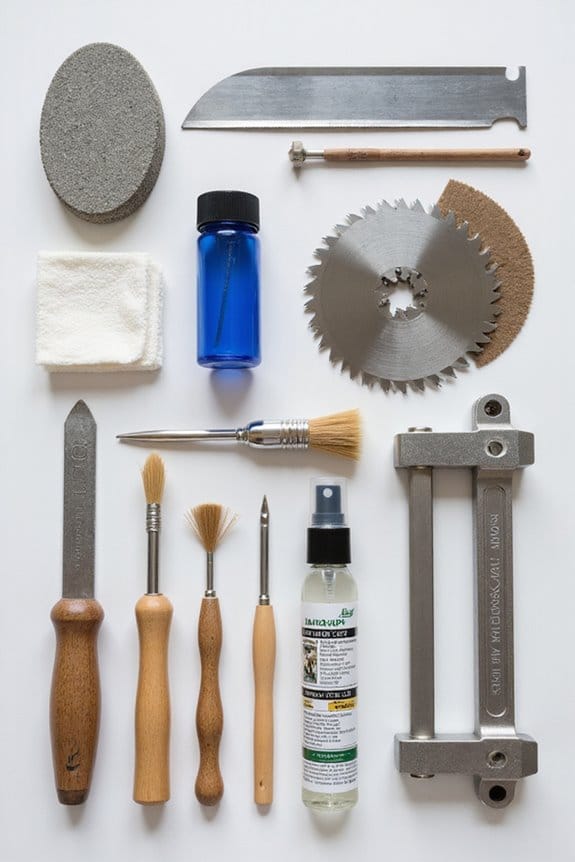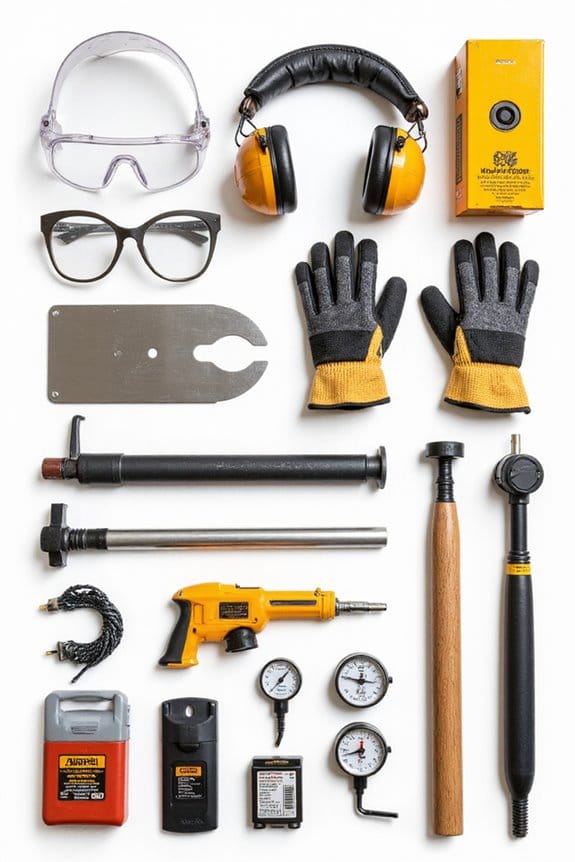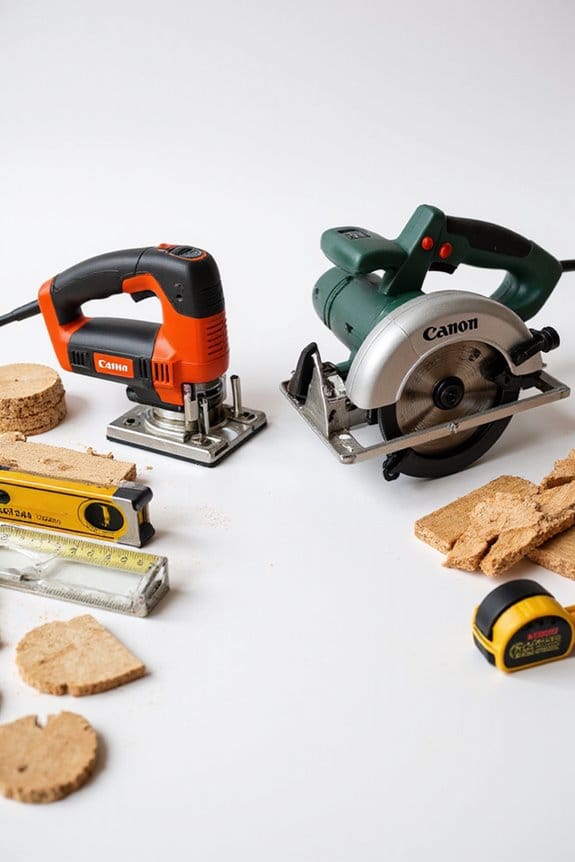To maintain your saw blades and keep them sharp, follow these steps: 1) Clean them with a 50/50 mix of laundry detergent and water. 2) Prevent rust by using corrosion-resistant materials and applying rust sprays. 3) Break in new blades with careful cuts and check tension. 4) Inspect blades regularly for damage. 5) Troubleshoot issues like rough cuts or broken teeth. 6) Store them individually to avoid scratches. Stick around, and you’ll discover even more useful tips!
Key Takeaways
- Regularly clean saw blades by soaking in a detergent solution and scrubbing with a stiff brush to remove debris.
- Apply rust-preventive sprays and oil after use to protect against rust and oxidation.
- Follow a proper break-in protocol by adjusting speed and feed rates during initial cuts to extend blade life.
- Conduct routine inspections for chips, bends, and alignment to ensure optimal performance and longevity.
- Store blades individually in protective cases in dry areas to prevent damage and contamination.
Cleaning Saw Blades

Cleaning saw blades is essential if you want to keep them in top shape and prolong their lifespan. Here’s how I tackle the job:
- Soaking Solutions: I usually mix concentrated laundry detergent with water, about 50/50, for a safe soak. About 30 minutes does the trick!
- Cleaning Techniques: After soaking, I grab a stiff-bristled brush or brass brush to scrub away the gunk. Remember, always brush away from your body—safety first!
- Detail Work: For those pesky spots, a toothbrush works wonders in tight areas.
- Final Touches: After a rinse, I let the blades dry thoroughly before storage. It’s like giving them a spa day, ensuring they’re ready for their next cutting adventure!
Preventing Rust and Oxidation
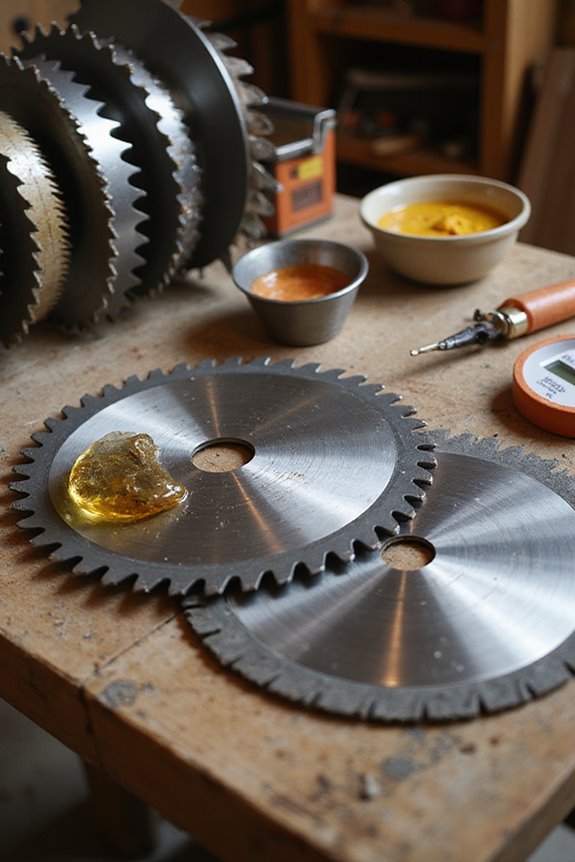
After giving your saw blades a good cleaning, keeping them rust-free is the next step in ensuring their longevity. Here’s how I do it:
- Choose Rust-Resistant Materials: I always opt for blades made from steel alloys with corrosion-resistant elements. Carbide-tipped blades are my go-to since they resist rust better than plain steel.
- Apply Protective Coatings: I use rust-preventive sprays, like Boeshield T-9, to create a waterproof barrier. Wiping blades with an oiled rag after use helps too!
- Store Properly: I keep my blades in dry, well-ventilated spots, avoiding damp surfaces.
- Routine Maintenance: I check my blades regularly for rust and reapply protective coatings to stay ahead of potential issues. Easy, right?
Proper Blade Break-in Protocol
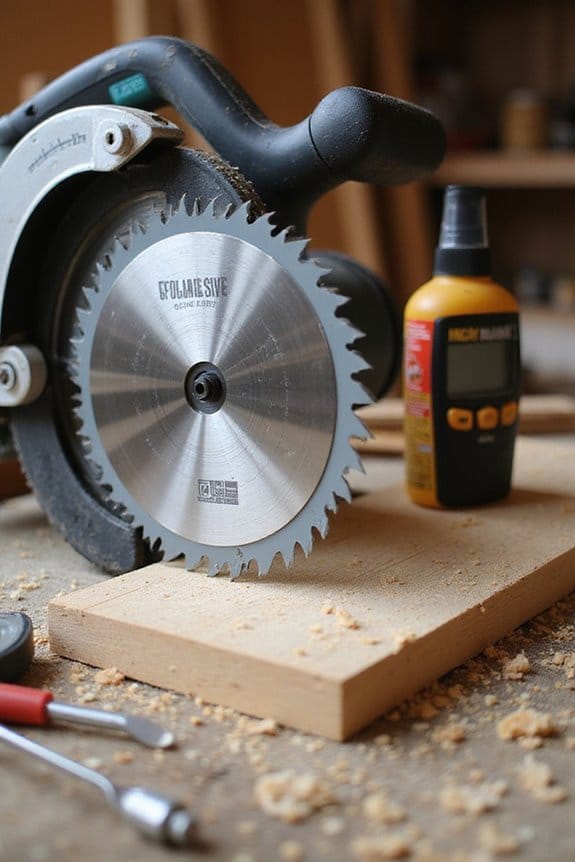
When it comes to maintaining your saw blades, understanding proper break-in protocol can make a world of difference. Here’s how I do it:
- Start Slow: Begin with the recommended blade speed for your material. Reduce the feed rate to about 50% for the first 50-100 square inches.
- Material Matters: Use softer metals at first. Save those tough alloys for later!
- Watch Those Chips: Aim for curly chips. If you see small flakes, your feed rate’s too low. If they’re blue, it’s too high.
- Check Tension: Always check blade tension after a few cuts—this affects performance.
Following these steps can extend your blade’s life considerably. Trust me; it’s worth the effort!
Routine Inspection and Maintenance
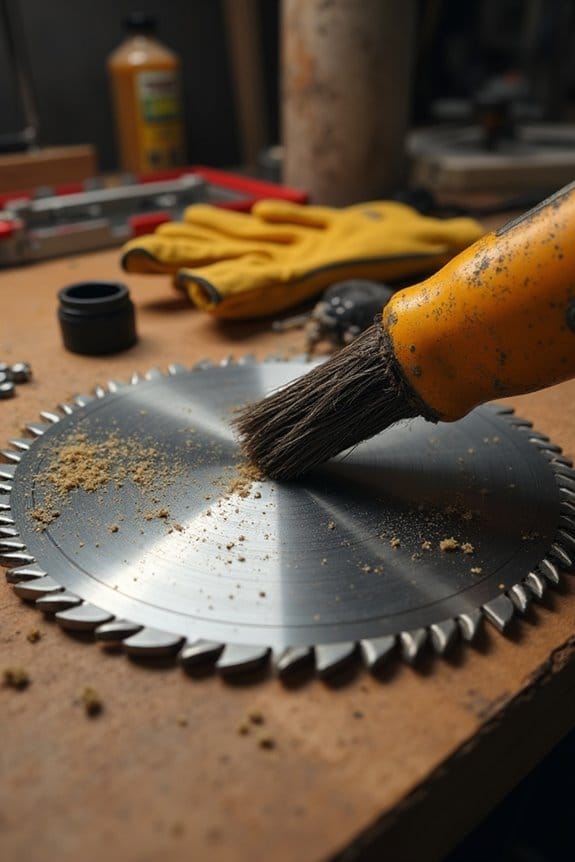
While it might seem tempting to jump right into cutting, taking a moment for routine inspection and maintenance can save you a ton of headaches later on. Here’s how I keep my blades in tip-top shape:
- Visual Checks: Look for chipped or bent teeth and any rust. Trust me, a quick glance can save you later.
- Blade Alignment: Regularly assess alignment to prevent uneven wear. Misalignment? That’s a recipe for disaster.
- Tension Matters: Use a tension gauge daily—incorrect tension can lead to cracks.
- Clean Up: After each use, clear debris from blade teeth. It keeps your cuts smooth.
These routine checks not only prolong blade life but also keep your projects running smoothly. So, take the time; your future self will thank you!
Troubleshooting Common Issues
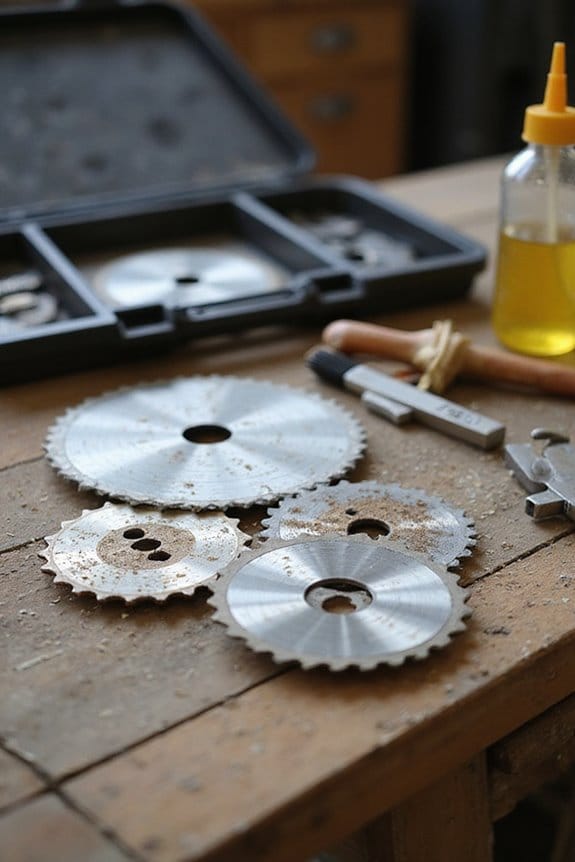
Troubleshooting common issues with saw blades can feel a bit intimidating, but don’t worry—I’ve got your back. Here are some tips to help you out:
- Rough Cuts: If you notice rough cuts, check your blade speed. Too high can cause heat and tearing. Also, verify the tooth pitch is right for the material.
- Broken Teeth: Chipped or broken teeth often stem from excessive feed pressure. Use the proper blade for the material to avoid this.
- Cracks: Cracks can arise from improper tension or blade binding. Keep an eye on your machine’s alignment.
- Chip Load: Overloaded tooth gullets indicate you might need to adjust your feed pressure or tooth pitch.
Stay attentive, and you’ll keep those blades in top shape!
Storage Best Practices
Keeping your saw blades in excellent condition doesn’t stop at troubleshooting issues; proper storage is just as important. Here are my top tips for effective blade organization:
- Separate Storage: Store blades individually to prevent contact. I avoid tossing them in drawers—no one wants chipped edges!
- Protective Coverings: Use sleeves or cases to keep them safe from metal surfaces. Soft materials like wood are your friends.
- Clean Before Storing: Always remove debris and contaminants. A quick wipe with a soft cloth works wonders!
- Rust Prevention: After cleaning, apply a light coat of oil. And remember, moisture is not a blade’s buddy, so keep them in dry areas.
- Secure and Label: Use dedicated cabinets and label storage areas for easy access. Happy cutting!
Frequently Asked Questions
How Often Should I Replace My Saw Blades?
I usually replace my saw blades based on clear replacement indicators like missing teeth or poor cut quality. Keeping an eye on blade lifespan helps me maintain efficiency and safety in my projects.
Can I Sharpen Saw Blades at Home?
When I accidentally ruined a project due to dull blades, I learned home sharpening’s a lifesaver. With patience and proper techniques, I’ve kept my blades sharp, enhancing my woodworking and ensuring better blade maintenance overall.
What Type of Lubricant Is Safe for Blades?
When choosing a lubricant for blade maintenance, I prefer non-toxic options like water-soluble and wax-based types. They keep my blades running smoothly, reducing friction and prolonging their lifespan while being safe for the environment.
Are There Specific Blades for Different Materials?
Ever wondered if there are specific blades for different materials? I can assure you, for wood cutting, laminate blades shine; for metal cutting, bi-metal blades excel, while masonry blades tackle tough materials like concrete and tile effortlessly.
How Do I Know When a Blade Is Dull?
I know a blade’s dull when I notice resistance, rough cuts, or burn marks. Those dull indicators signal poor blade performance, making it harder for me to achieve clean, efficient cuts. Regular checks are essential.

